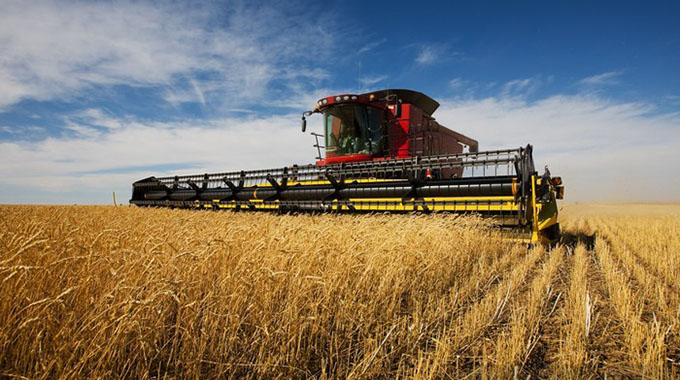
Obert Chifamba Agric-Insight
THE sun first shines on those who stand, before it comes to those who kneel.
Essentially, our farmers have a thing or two to learn from this wise saying from Nigerian folklore.
Besides being a “one size fits all” kind of statement, it easily sets the stage for comparisons between farmers who plant early and those who wait until the season is in full swing to start planting.
While the decision to dry-plant or plant with the first rains naturally borders more on gambling than certainty, the early planters have in most cases managed to salvage something even in bad seasons compared to those that take their time.
The 2019/20 farming will reinforce the difference between the two sets of farmers through the yields they will score.
It is no secret that the 2019/20 weather forecast might have sent the wrong signals to most farmers, as the first half (October to December 2019) had been touted as going to have normal to above normal rains while the last half (January to March 2020) would have normal with a bias towards below normal and this essentially dictated how the farmers planned for their season.
A big chunk of those farmers that targeted to capitalise on the forecast good first half and planted early managed to salvage something and will not be food insecure from the word go while those that waited until the eleventh hour may be regretting it now.
The last half of the season incidentally had the lion’s share of the rains, as if to invalidate the predictions issued by the weather people, which prompted some farmers to even start planting afresh after their first crops were decimated by the blistering heat that marked the first part of the season.
The rains, however, seem to have ended leaving crops at the mercy of the sun once again.
In dry regions like Matabeleland, the heat is also causing serious evapotranspiration, which has seen grass and other forms of vegetation wilting and dying, placing farmers in a Catch-22 situation in which they do not even know what to do as both crops and livestock are still in danger.
However, those farmers who will get decent yields need to manage the harvest properly, lest they also join the list of food insecure people who will require to run around to secure grain or wait for Government and humanitarian organisations to chip in and assist them.
Some farmers might find themselves unable to resist the temptation to sell more than half or almost all of the grain they are going to harvest to get some money but the reality on the ground is that it is always easier to search for money on full bellies than to do so on an empty stomach.
If they are to sell their maize to the Grain Marketing Board (GMB), which will be buying a tonne of maize for $6 958, up from $4 000, they must remember to leave enough to see them to the next harvest.
They can also take care of their neighbours who might fail to reap enough to last them even past the halfway mark of this year.
In any case, no one knows how long the Covid-19 pandemic currently afflicting the world will stretch before business returns to normal, which might also mean that farmers may fail to sell their grain to GMB in the event that the outbreak stretches into the future —which we all hope will not happen.
In the event that such a thing happens, the farmers may be restricted to selling to the local markets, which will mean their local communities.
That also means that they would have eliminated costs of ferrying the grain to the GMB but the market will come to their doorsteps.
Such farmers also need to remember to fix realistic prices for their grain if they are to deal with local consumers to avoid profiteering.
On the other hand, food secure farmers must also remember that they need to store the grain properly lest they fall victim to storage losses.
In some cases, farmers end up buying grain to supplement what they have when in reality they should not be doing so but would have incurred heavy losses emanating from their failure to provide proper storage facilities or treat the grain against pest attacks.
Storage losses can also be due to thefts in the event of the storage facility being easily accessible to thieves while vermin may also cause headaches for the farmer.
In recent years many farmers have lost all their stored grain to veld fires after failing to protect storage facilities from fires.
They need to construct fire guards around their homesteads and make sure there is no dry matter connecting the storage facility to the veld or fields.
Some of the grain is also lost during the process of transporting it from the field to the homestead hence the need for farmers to ensure that the mode of transport used for the job is secure enough to keep everything inside.
There are, however, many other processes through which yields can be lost especially during harvesting if harvesters do not have enough containers to carry the harvest.
The shelling process is also a potential problem area if not done properly as substantial quantities of grain are usually lost during that time.
If the farmer is using a combine harvester, he needs to make sure everything in the field is accounted for while those using manual labour need to supervise the people effectively and make sure fallen plants are also picked up and included in the lot that will be erect.
A significant percentage of the grain is left in the fields if harvesters are not diligent enough to account for plants that have fallen to the ground.
Sometimes setting targets for hired labour accompanied by laxity in monitoring them may result in significant losses that may come back to haunt the farmer later.
